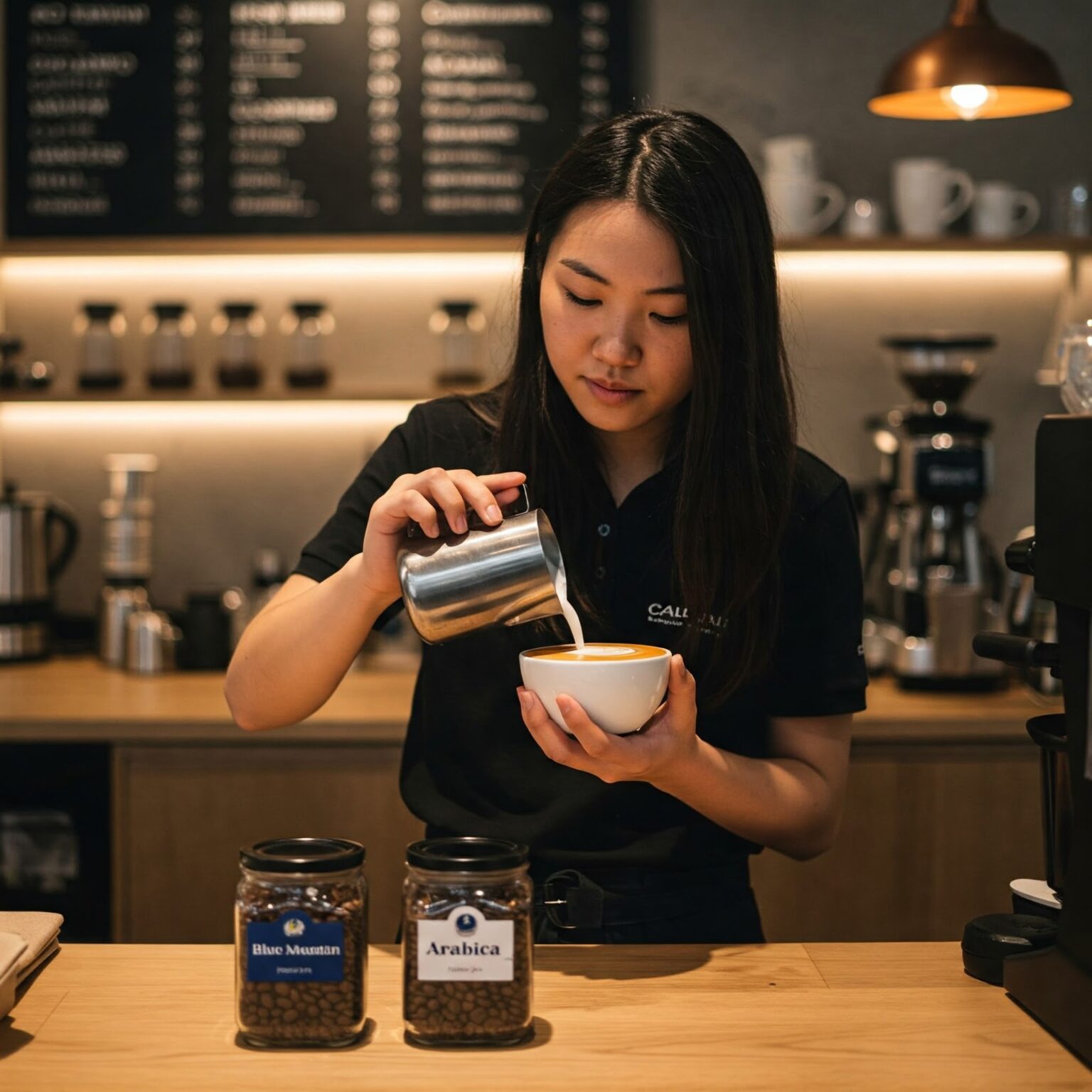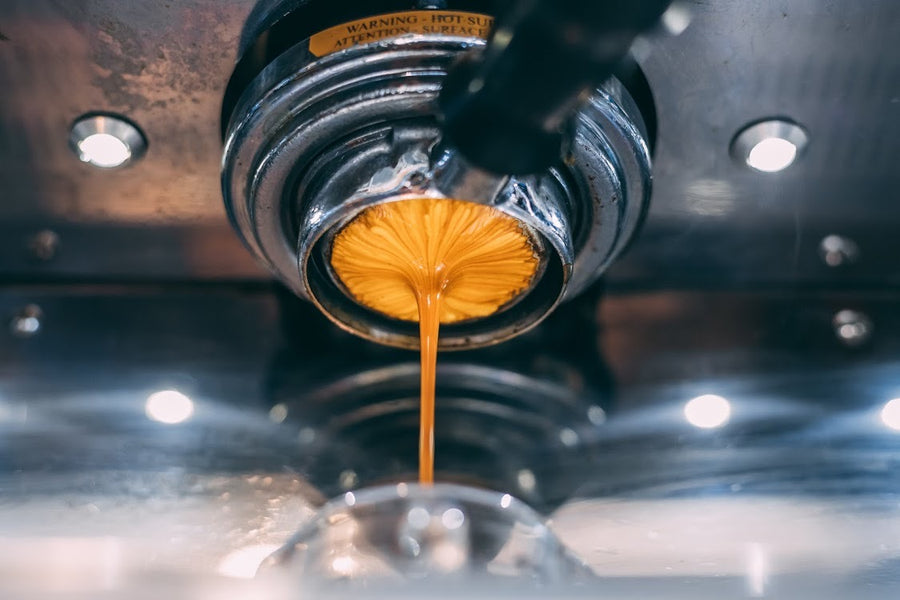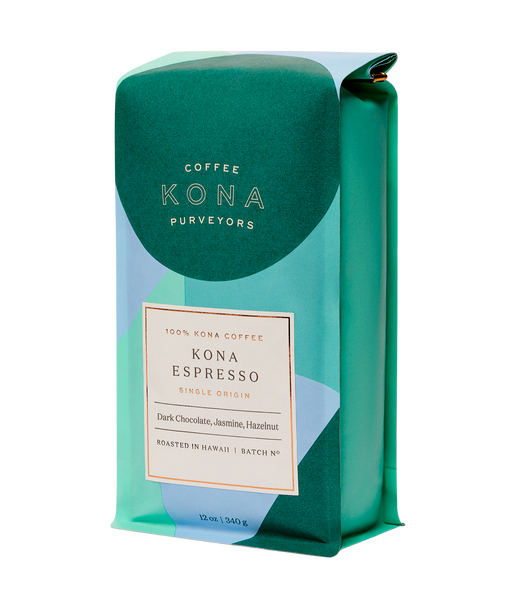Brewing Tips to Get the Best Out of SOE Single Origin Espresso
Brewing Tips to Get the Best Out of SOE Single Origin Espresso
Blog Article
Checking Out the Abundant Flavors of Coffee Beans: a Deep Dive Into Coffee and Blended Coffee Beans
When you discover the rich tastes of coffee beans, you discover a complex globe where each range brings its own character to your mug. Comprehending the origins, processing approaches, and toasting techniques can change your coffee experience. As you browse through the art of coffee and the creativity behind combined coffees, you'll start to appreciate the nuances that make each sip special. What you'll discover next might transform the method you enjoy your early morning brew.
The Origins of Coffee Beans: Discovering Terroir and Flavor Profiles
When you take a sip of coffee, you're not just enjoying a beverage; you're experiencing an abundant tapestry of flavors formed by the beans' origins. Each region produces one-of-a-kind flavor accounts influenced by environment, altitude, and dirt. As an example, beans from Ethiopia often rupture with bright, fruity notes, while those from Colombia have a tendency to offer a balanced, nutty sweetness.
As you discover different beginnings, you'll see how terroir-- the environmental variables impacting a plant-- plays an important duty - Single Origin Espresso. The very same coffee variety can taste considerably various depending on where it's grown
When you take into consideration these factors, you begin to appreciate the complexity behind your mug. Each sip narrates of the land and the farmers that nurtured the beans. So, next time you indulge, believe regarding the trip your coffee took prior to it reached your hands, and relish those detailed tastes that reflect its origin.
Comprehending Espresso: The Art and Science Behind the Mixture
When you assume regarding espresso, it's not almost the solid flavor; it's additionally regarding the methods that bring it to life. Comprehending how different prep work approaches effect taste can change your developing experience. Let's explore the complexities of coffee prep work and uncover the unique flavor profiles that make each cup unique.
Coffee Preparation Strategies
Coffee preparation is both an art and a science, integrating precise techniques with a deep understanding of coffee. To begin, you'll wish to pick high-grade, newly roasted beans and grind them finely for perfect removal (Single Origin Espresso). The grind dimension is crucial; too crude, and your espresso will certainly be weak, as well fine, and it'll be bitter
The outcome ought to be an abundant, creamy coffee with a beautiful layer of crema on top. With method, you'll understand these methods.
Taste Profiles Described
The world of coffee offers an abundant tapestry of taste accounts that can boost your coffee experience. Light roasts often display intense level of acidity and lively flavors, while dark roasts existing much deeper, bolder tones.
A well-crafted mix may harmonize the bright notes of an Ethiopian bean with the rich, chocolatey touches of a Brazilian bean. Accept the journey of uncovering coffee's diverse tastes, and you'll change your coffee ritual right into an amazing experience.
Processing Approaches: Exactly How They Impact Flavor and Fragrance
While it could seem that the beginning of coffee beans is one of the most significant consider identifying their flavor and fragrance, the handling techniques used post-harvest play an equally essential duty. You'll locate that these techniques can considerably alter the last taste account of your cup.
As an example, the washed procedure eliminates the fruit from the beans before fermentation, usually resulting in a cleaner, brighter taste. On the other hand, the natural process leaves the fruit undamaged throughout drying, causing a sweeter, fruitier profile.
Various other techniques, like honey processing, strike an equilibrium, permitting some fruit mucilage to stay, giving a special intricacy.
Each processing technique connects with the beans' fundamental features, enhancing or muting details flavors and scents. When you sip that coffee or combined coffee, keep in mind that the trip from cherry to cup is influenced not simply by beginning yet also by exactly how those beans were processed.
Toasting Strategies: Opening the Full Prospective of Coffee Beans
Roasting strategies are important for exposing the full possibility of coffee beans, as they change raw, environment-friendly beans right into the fragrant, flavorful coffee you delight in. The option of roasting technique-- light, tool, or dark-- drastically affects taste accounts. Light roasts protect the beans' all-natural level of acidity and fruity notes, while tool roasts equilibrium sweet taste and richness. Dark roasts, on the various other hand, highlight vibrant, great smoky tastes.
A slower roast at reduced temperatures permits for complicated flavors to create, while a quicker roast can escalate resentment. By mastering these strategies, you'll expose a globe of flavor, elevating your coffee experience to brand-new heights.
The Magic of Blended Coffee: Creating One-of-a-kind Flavor Experiences
Developing an one-of-a-kind flavor experience with combined coffee can transform your early morning routine into an exploration of preference. By combining various beans from various areas, you can reveal a symphony of flavors that elevate your cup to brand-new heights. Each mix offers an unique account, balancing body, sweetness, and acidity to produce something truly special.
When you pick a blend, you're not just selecting a coffee; you're selecting a journey throughout diverse landscapes and cultures. Trying out with various combinations enables you to uncover your personal faves, whether you enjoy fruity notes or rich, chocolatey undertones.

Sampling Notes: Recognizing the Nuances in Your Cup
As you sip your coffee, you could notice a spectrum of flavors dancing on your palate, each exposing the intricacies of the beans. You may taste the brilliant level of acidity evocative citrus or the deep, rich notes akin to dark chocolate. The sweetness might evoke honey or caramel, balancing the general account perfectly.
Pay focus to the body of the coffee-- does it feel light and airy, or is it full and velvety? The surface, as well, uses clues; a remaining aftertaste might hint at nuttiness or floral undertones.

Do not neglect to discover the distinct qualities of different origins, as each area gives unique flavors - Single Origin Espresso. Ethiopian coffees often existing fruity notes, while Colombian beans may showcase an extra rounded sweet taste. By identifying these nuances, you'll deepen your admiration for every cup, boosting your coffee experience to new elevations

Developing Techniques: Taking Full Advantage Of Taste Removal for Every Bean
When you discover the different developing methods, you'll uncover that each method can significantly influence the flavor account of your coffee. From French press to pour-over, each method removes different substances, enhancing or silencing certain notes. As an example, making use of a French press enables oils to remain in the mixture, creating a richer taste, while pour-over emphasizes clearness and illumination.
Temperature and grind dimension additionally websites play necessary roles. A coarser grind works best for cold mixtures, while a great grind is excellent for espresso. Explore water temperature-- between 195 ° F and 205 ° F-- can expose hidden tastes, as well.
Do not forget about soaking time; a fast removal can lead to sour notes, while over-extraction may generate anger. By readjusting these variables, you can make the most of flavor removal and absolutely elevate your coffee experience. Delight in the trip of uncovering what approach best suits your taste!
Frequently Asked Concerns
What Is the Suitable Water Temperature Level for Developing Coffee?
The ideal water temperature for brewing coffee's between 195 ° F and 205 ° F. If you use water that's as well warm, you'll over-extract flavors; too cold, and you won't draw out enough. Go for that wonderful place for the ideal mixture!
How Does Work Dimension Influence Coffee Taste?
Work size considerably affects coffee flavor. Better grinds remove more flavors and oils, resulting in a bolder taste, while coarser grinds yield a lighter taste. Readjusting work dimension assists you accomplish your wanted coffee account.
Exist Health And Wellness Perks Surrounding Alcohol Consumption Coffee?

What Is the Difference In Between Arabica and Robusta Beans?
Arabica beans are smoother and sweeter, usually featuring fruity tastes, while robusta beans are more powerful with a bitter taste and higher high levels of caffeine material. You'll discover these distinctions in scent and brewing experience.
Just How Can I Shop Coffee Beans for Quality?
To keep coffee beans for freshness, maintain them in a click here for more closed container, away from dampness, light, and heat. If you only grind what you require right before developing., you'll maintain their taste longer.
Exploring the Abundant Flavors of Coffee Beans: a Deep Dive Into Coffee and Blended Coffee Beans.
When you explore the abundant flavors of coffee beans, you reveal a complicated globe where each variety brings its very own character to your mug.When you take a sip of coffee, you're not just delighting in a beverage; you're experiencing a rich tapestry of tastes shaped by the beans' origins.Roasting strategies are necessary for revealing the complete possibility of coffee beans, as they transform raw, environment-friendly beans into the fragrant, tasty coffee you appreciate.As you sip your coffee, you may notice a spectrum of tastes dancing on your palate, each exposing the details of the beans.
Report this page